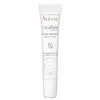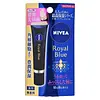What's inside
What's inside
 Key Ingredients
Key Ingredients

 Benefits
Benefits

 Concerns
Concerns

 Ingredients Side-by-side
Ingredients Side-by-side

Glycerin
HumectantRicinus Communis Seed Oil
MaskingWater
Skin ConditioningBeeswax
Emulsion StabilisingCaprylic/Capric Triglyceride
MaskingParaffinum Liquidum
EmollientBis-Diglyceryl Polyacyladipate-2
EmollientIsopropyl Palmitate
EmollientHydrogenated Castor Oil
EmollientHydrogenated Polyisobutene
EmollientPEG-45/Dodecyl Glycol Copolymer
Emulsion StabilisingAluminum Sucrose Octasulfate
Skin ConditioningZinc Oxide
Cosmetic ColorantMagnesium Sulfate
Zinc Sulfate
AntimicrobialGlycerin, Ricinus Communis Seed Oil, Water, Beeswax, Caprylic/Capric Triglyceride, Paraffinum Liquidum, Bis-Diglyceryl Polyacyladipate-2, Isopropyl Palmitate, Hydrogenated Castor Oil, Hydrogenated Polyisobutene, PEG-45/Dodecyl Glycol Copolymer, Aluminum Sucrose Octasulfate, Zinc Oxide, Magnesium Sulfate, Zinc Sulfate
Tocopheryl Acetate
AntioxidantStearyl Glycyrrhetinate
Skin ConditioningPetrolatum
EmollientGlyceryl Diisostearate
EmollientDiisostearyl Malate
EmollientDextrin Palmitate
EmulsifyingPhytosteryl/Behenyl/Octyldodecyl Lauroyl Glutamate
Skin ConditioningParaffinum Liquidum
EmollientHydrogenated Polybutene
Phytosteryl/Octyldodecyl Lauroyl Glutamate
Skin ConditioningPhytosteryl/Isostearyl/Cetyl/Stearyl/Behenyl Dimer Dilinoleate
Skin ConditioningPolyglyceryl-6 Diisostearate
EmulsifyingGlycerin
HumectantDipentaerythrityl Hexahydroxystearate
EmulsifyingCetyl-Pg Hydroxyethyl Decanamide
Skin ConditioningCholesterol
EmollientIsostearyl Isostearate
EmollientUbiquinone
AntioxidantSodium Hyaluronate
HumectantTin Oxide
AbrasiveDimethicone
EmollientWater
Skin ConditioningAnhydroxylitol
HumectantPhenoxyethanol
PreservativeSodium Paraben
PreservativeBHT
AntioxidantCI 19140
Cosmetic ColorantTocopheryl Acetate, Stearyl Glycyrrhetinate, Petrolatum, Glyceryl Diisostearate, Diisostearyl Malate, Dextrin Palmitate, Phytosteryl/Behenyl/Octyldodecyl Lauroyl Glutamate, Paraffinum Liquidum, Hydrogenated Polybutene, Phytosteryl/Octyldodecyl Lauroyl Glutamate, Phytosteryl/Isostearyl/Cetyl/Stearyl/Behenyl Dimer Dilinoleate, Polyglyceryl-6 Diisostearate, Glycerin, Dipentaerythrityl Hexahydroxystearate, Cetyl-Pg Hydroxyethyl Decanamide, Cholesterol, Isostearyl Isostearate, Ubiquinone, Sodium Hyaluronate, Tin Oxide, Dimethicone, Water, Anhydroxylitol, Phenoxyethanol, Sodium Paraben, BHT, CI 19140
 Reviews
Reviews

Ingredients Explained
These ingredients are found in both products.
Ingredients higher up in an ingredient list are typically present in a larger amount.
Glycerin is already naturally found in your skin. It helps moisturize and protect your skin.
A study from 2016 found glycerin to be more effective as a humectant than AHAs and hyaluronic acid.
As a humectant, it helps the skin stay hydrated by pulling moisture to your skin. The low molecular weight of glycerin allows it to pull moisture into the deeper layers of your skin.
Hydrated skin improves your skin barrier; Your skin barrier helps protect against irritants and bacteria.
Glycerin has also been found to have antimicrobial and antiviral properties. Due to these properties, glycerin is often used in wound and burn treatments.
In cosmetics, glycerin is usually derived from plants such as soybean or palm. However, it can also be sourced from animals, such as tallow or animal fat.
This ingredient is organic, colorless, odorless, and non-toxic.
Glycerin is the name for this ingredient in American English. British English uses Glycerol/Glycerine.
Learn more about GlycerinParaffinum Liquidum is also known as liquid paraffin. It is a type of highly refined mineral oil.
Like other oils, Paraffinum Liquidum has emollient properties. Emollients help soothe and soften the skin. By creating a barrier to trap moisture within, emollients help keep your skin hydrated.
Paraffinum Liquidum does not irritate the skin and is non-comedogenic.
Learn more about Paraffinum LiquidumWater. It's the most common cosmetic ingredient of all. You'll usually see it at the top of ingredient lists, meaning that it makes up the largest part of the product.
So why is it so popular? Water most often acts as a solvent - this means that it helps dissolve other ingredients into the formulation.
You'll also recognize water as that liquid we all need to stay alive. If you see this, drink a glass of water. Stay hydrated!
Learn more about Water